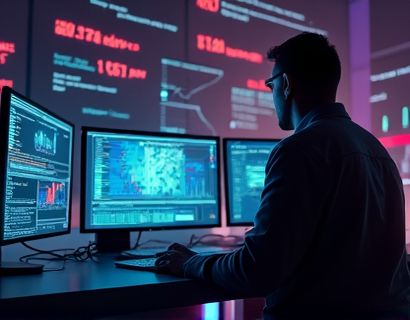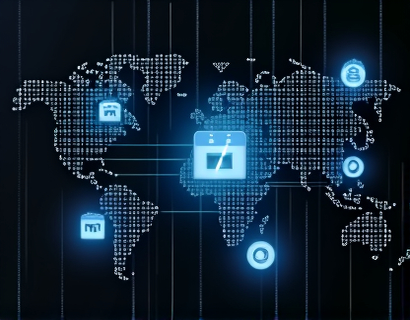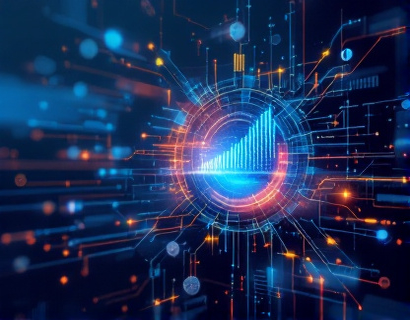Blockchain-Powered Asset Tokenization: Revolutionizing Market Accessibility and Liquidity for Real-World Assets
Blockchain technology is at the forefront of a transformative shift in asset management, enabling the seamless tokenization of real-world assets. This innovation significantly enhances liquidity and market accessibility, integrating physical assets into the digital ecosystem. The result is a secure, transparent, and efficient environment that unlocks new potential for both investors and asset holders. By leveraging blockchain, individuals and businesses can streamline transactions, expand their market reach, and ensure a trustworthy and secure framework.
The concept of asset tokenization involves converting tangible assets such as real estate, art, infrastructure, and even intangible assets like intellectual property into digital tokens on a blockchain. These tokens represent fractional ownership or rights to the underlying asset, making it possible for a broader range of investors to participate in markets that were previously accessible only to a select few. This democratization of access is a pivotal change, as it lowers barriers to entry and increases market liquidity.
Enhancing Liquidity through Tokenization
One of the most significant benefits of blockchain-powered asset tokenization is the enhancement of liquidity. Traditional real-world assets are often illiquid, meaning they cannot be easily bought or sold without significantly affecting their price. Tokenization addresses this issue by breaking down assets into smaller, tradable units. For instance, a piece of real estate worth millions can be divided into thousands of tokens, each representing a fraction of the property. This granularity allows for more frequent and smaller transactions, thereby increasing the overall liquidity of the asset.
Increased liquidity also means that asset holders can more easily convert their investments into cash when needed. This flexibility is particularly valuable for investors who require access to capital for other opportunities or to manage financial obligations. The ability to quickly buy and sell tokens on decentralized exchanges further enhances the liquidity, as these platforms operate 24/7 without the need for intermediaries.
Improving Market Accessibility
Tokenization not only boosts liquidity but also significantly improves market accessibility. By converting assets into digital tokens, the traditional barriers of entry, such as high minimum investment requirements and complex legal frameworks, are dismantled. Smaller investors can now participate in markets that were once exclusive to institutional investors and high-net-worth individuals. This inclusivity fosters a more diverse and dynamic market, driving innovation and growth.
Moreover, the global nature of blockchain technology means that asset tokenization transcends geographical boundaries. Investors from around the world can access and trade tokens representing real-world assets, thereby expanding the potential investor base and increasing market efficiency. This global reach is particularly beneficial for assets located in emerging markets, where traditional access to capital and investment can be limited.
Ensuring Security and Transparency
Security and transparency are paramount in any financial transaction, and blockchain technology excels in these areas. The immutable and decentralized nature of blockchain ensures that once a transaction is recorded, it cannot be altered or deleted. This immutability provides a high level of security against fraud and manipulation, giving asset holders and investors confidence in the system.
Transparency is another key feature of blockchain. All transactions on a blockchain are visible to all participants, creating an open and auditable ledger. This level of transparency reduces the risk of disputes and increases trust among market participants. Smart contracts, self-executing contracts with the terms directly written into code, further automate and enforce the rules of transactions, reducing the need for intermediaries and lowering transaction costs.
Use Cases of Asset Tokenization
The applications of asset tokenization are vast and varied, spanning multiple industries. In real estate, tokenization allows for fractional ownership of properties, making it possible for multiple investors to own a share of a building or a piece of land. This model can be particularly attractive for real estate investment trusts (REITs), where investors can buy and sell shares more easily and with greater liquidity.
In the art world, tokenization can democratize access to high-value art pieces. Collectors can purchase fractions of expensive artworks, making it feasible for a broader audience to invest in art. This not only increases liquidity for artists and galleries but also provides new investment opportunities for art enthusiasts.
Infrastructure projects, such as bridges, roads, and utilities, can also benefit from tokenization. By issuing tokens that represent ownership or usage rights, governments and private entities can raise capital more efficiently. Investors can buy these tokens and earn returns based on the asset's performance, providing a new avenue for public-private partnerships and infrastructure financing.
Intangible Assets and Intellectual Property
Beyond physical assets, tokenization extends to intangible assets such as intellectual property (IP). Patents, copyrights, and trademarks can be tokenized, allowing creators and owners to tokenize their IP and monetize it more effectively. This can lead to new revenue streams and greater protection against infringement, as the ownership and usage rights are clearly defined and enforceable on the blockchain.
Additionally, tokenization can streamline the licensing and royalty distribution processes. Smart contracts can automatically handle payments and ensure that creators receive their due compensation, reducing administrative overhead and ensuring fair distribution of profits.
Challenges and Considerations
Despite the numerous benefits, asset tokenization is not without its challenges. Regulatory uncertainty remains a significant hurdle, as different jurisdictions have varying approaches to blockchain and tokenized assets. Compliance with securities laws, anti-money laundering (AML) regulations, and know-your-customer (KYC) requirements is crucial to ensure legal and operational integrity.
Technical challenges also exist, such as scalability and interoperability. As the number of tokens and transactions grows, blockchain networks must be able to handle the load efficiently. Ensuring that different blockchain platforms can communicate and transfer assets seamlessly is essential for widespread adoption.
Another consideration is the user experience. For tokenization to be truly accessible, the process must be user-friendly and accessible to non-technical users. Simplifying the onboarding process, providing clear educational resources, and developing intuitive interfaces are critical steps in making blockchain-powered asset tokenization mainstream.
Future Prospects
The future of asset tokenization looks promising, with ongoing developments in blockchain technology addressing current challenges. Advancements in scalable blockchain solutions, such as layer 2 protocols and cross-chain interoperability, are set to enhance the efficiency and capacity of tokenized asset markets.
Regulatory clarity is also expected to improve, with more governments and financial authorities recognizing the potential of blockchain and taking steps to create favorable frameworks. This will further legitimize tokenized assets and encourage broader adoption.
As the ecosystem matures, we can anticipate the emergence of specialized platforms and services tailored to different asset types and use cases. These platforms will offer sophisticated tools for asset management, analysis, and trading, making the tokenization process even more accessible and valuable for all participants.
In conclusion, blockchain-powered asset tokenization is revolutionizing the way real-world assets are managed, traded, and invested in. By enhancing liquidity, improving market accessibility, ensuring security and transparency, and addressing various use cases, this innovative approach is unlocking new opportunities for investors and asset holders. As the technology continues to evolve and regulatory environments adapt, the potential for blockchain to transform asset management is immense.










































